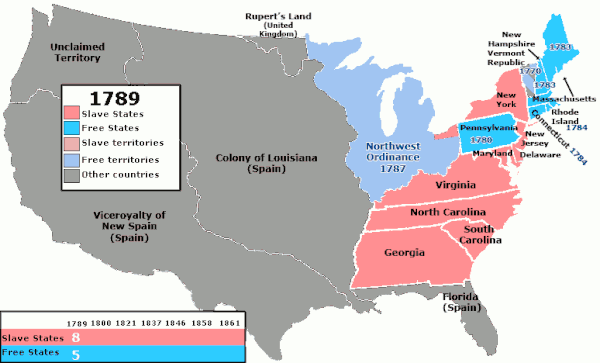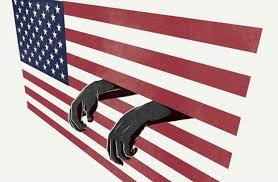 Before the nostalgic topic of the day, the latest on what is happening in the Israel-Iran War.
Before the nostalgic topic of the day, the latest on what is happening in the Israel-Iran War.
- The fact that Israel actually had the audacity to bomb Iran was a shock.
- The Iranian response came, but was weaker than expected.
- So far, after four days.
- Iran: 220 deaths, with 1,000 injured. Don't believe what they report.
- Israel: 24 deaths, 600 injured.
- The Iron Dome defense does have U.S. participation, but still allows maybe 5% of drones and missiles to penetrate.
- Incidentally, Trump wants a Golden Dome for America at a cost of $175 billion.
- Won't be easy, for Israel is 400 times smaller than the USA. Much of the hardware came from the U.S. in many billions of dollars since 2011.
- The critical contention is that the difference between the iron and golden ones is like comparing a kayak to a battleship.
- This is not a war for territory. Israel just wanted to eliminate their most serious existential threat, that of extinction, and felt this time had come. Not that Iran was a few days from having a nuclear capability, but that it was getting too close for comfort.
- Israel has dominated this war, and now has air supremacy over Iran. This is almost like saying they have won the war. But not quite.
- There is now a new risk. Iran might be forced to take desperate measures. About the only thing left to do is assassinate enemy leaders, something Israel has already accomplished. The Ayatollah has be purposefully kept alive, but even President Donald Trump is now hinting....so far.
- There are two steps Israel now needs to accomplish.
- Get the bunker-busting superbombs the U.S. and European nations have to more completely take out nuclear facilities. This is what one looks like below, weighing 30,000 pounds and only U.S. B-2 stealth bombers are configured to carry it. In other words, the U.S. Air Force will need to participate for bunker-busters to be used.
- Send their militia to these sites to more completely do the job.
- While Trump bragged that he could end both the Ukraine-Russia War and Israel-Hamas War in one day, it has been almost five months, and counting, with this Israel-Iran War now a third, and most concerning, conflict as an added burden. Why is it that everything he does only makes things worse?
- Growing up, and this would be from 1940 to 1958 in my youth, I accepted racial discrimination as a way of life. From the annexation of Hawaii in 1898 through most of the 1950s, the local society was paternalistic and white-controlled, with sugar plantations, to be later mentioned, as iconic examples. Asians born in Hawaii who went away to universities, for example, had difficulty securing a good job when they returned home into the 1960s and even beyond.
- Previously, while the Kingdom of Hawaii had outlawed slavery, there was a system of indentured servitude that prevailed in the sugar plantation system until 1900. Formalized by the Master and Servants Act of 1850, conditions were created where laborers brought in from foreign countries were bound to plantations with limited rights and harsh working conditions. This was a system of bondage, or, in other words, slavery.
- To provide background, some earlier history. American Protestant missionaries arrived in Hawaii in 1820. They were led by Reverend Hiram Bingham (left) and Reverend Asa Thurston (right).
- The Thurston lava tube in Hawaii Volcanoes National Park is named for his family. Son of Asa, Lorrin Thurston, was a leader of the 1893 overthrow of the Kingdom of Hawaii, and great-great Grandson Thurston Twigg-Smith, owned the Honolulu Advertiser, a local newspaper.
- Hiram Bingham I designed Kawaiahao Church. Hiram Bingham II became a professor at Yale, then a U.S. Senator and Governor of Connecticut. He "discovered" Machu Picchu.
- Sons and grandsons of these early missionaries largely began and controlled the Hawaiian sugar industry, which was run by Castle & Cooke, Alexander & Baldwin, C. Brewer, American Factors and Theo H. Davis. Into the 1930's, the board of directors were heavily influenced by missionary descendants.
- This Big Five group of companies also gained control of other aspects of the Hawaiian economy, including shipping, warehousing, banking and importing.
- They pretty much played the most significant roles in the overthrow of the Kingdom of Hawaii and subsequent annexation of Hawaii by the U.S.
- After graduating from Stanford University in 1962, I spent seven years in the sugar industry working for C. Brewer, which sent me to LSU, where I subsequently earned a PhD in biochemical engineering, which led to my working for the University of Hawaii from 1972. 53 years later, I still have an office on the Manoa Campus.
- When I started at Hutchinson Sugar Company on the Big Island of Hawaii, I knew very little of the history of sugar plantation life, for I grew up in Honolulu and was unaware of that society.
- When I first arrived back home from college in 1962, this was three years after Hawaii had became a state, and the local politics were were shifting away from a Republican-run paternalistic society, which still was prevalent in all the sugar plantations, where the manager was king, there was a competing labor union of an Asian/Philippine workforce and a management of almost all Caucasians. Read the details here.
- It was the sugar industry, which from the 1800s brought in workers from the Orient and Pacific, leading to the diverse ethnicity we still largely have today of 37% Asians, 22% White, 10% Pacific Islanders., 8% Latino, 2% Black and 25% multiracial.
- Republicans ran the state for a long while, until 1954, when a transition began, led by Japanese American veterans from World War II. In 1959 Democrats took over the State Legislature. This racial shift was also experienced in education and other fields. From total Republican control to Democratic dominated still today, for the 2024 presidential election had Kamala Harris getting 61% of the votes to Donald Trump's 37%. All four congressional representatives today are Democrats.
- However, I just read that Mississippi became the last state to officially ratify the 13th Amendment, finally ending slavery on 7February2013.
- Interestingly enough, the last state to have slaves was Delaware, which abolished slavery on 6January1901.
- In 1852, the Hawaii constitution included a clause abolishing slavery, which went into effect in 1856, ten years before the Civil War.
- That Masters and Servants Act of 1850 that allowed sugar companies to collude with the government to treat recruited laborers from China, Japan, Korea, Portugal and the Philippines as slaves, however, was tolerated. Those who ran away were hunted down, and when found, jailed.
- A Japanese only known as Mioshi challenged the law in 1891.
- The sugar industry fought this.
- The Hawaii Supreme Court rejected Mioshi's argument, which thus continued this form of slavery in Hawaii.
- However, the court opinion written by Sanford Dole (right) indicated that, even though Mioshi was paid, the contract was unconstitutional. Confusing, but this later led to Dole, who was part of the group that overthrew the Hawaiian monarch in 1893, becoming president of the provisional government, and first governor in 1900. Sanford's second cousin, James, founded Dole Food Company, which dominated the local pineapple industry.
- When Hawaii became a territory in 1900, it had to follow the national abolishment of slavery.
- The prior year in 1899, however, the Hawaiian sugar planters had just imported 26,163 Japanese as contract laborers, the largest number brought to the islands in any single year.
- These laborers demanded that the contracts be cancelled because of territory status.
- There was a strike on Maui in 1900, and 200 Japanese workers rioted. It worked, contracts were thus cancelled.
- So I guess this was the end of slavery in Hawaii.
- However, on 10October 2010, a report called Neil Abercrombie's slavery problem, surfaced.
- Governor Linda Lingle (the last Republican governor of Hawaii) vetoed a gay civil union bill.
- Congressman Neil Abercrombie claimed that civil rights cannot be compromised. Not sure how this topic gained any link to slavery, but civil rights are civil rights.
- In this brouhaha, it comes to light that the owners of Aloun farm, Mike and Alec Sou, were involved in the "largest human trafficking case in U.S history." This is an exaggeration of what happened when the Sou's pleaded guilty in 2001 to paying a Thai agent to bring 44 farm laborers at low wages and shabby housing, just as the sugar industry did in 1899, which was disallowed in 1900.
- Was then this legal result the real end of slavery in Hawaii? I'll let you read this Hawaii Free Press article if you wish. Not exactly all that clear what really happened, nor the legal ramifications regarding slavery.
- In any case, the Sou brothers are still running Aloun Farms, doing well and now expanding into Kauai.
- Clearly, Mississippi was the final state to ratify the 13th amendment, and this occurred in 2013.
- Hawaii, it turns out, did ratify this law in 1959 when it became the 50th state. So Hawaii was not the last state to abolish slavery, and even that recent so-called civil rights issue was before Mississippi's ratification.
- However, there are rumblings about slavery even today, as you shall see.
- Know anything about the 13th amendment?
- President Abraham Lincoln's Emancipation Proclamation freed all American slaves in 1863.
- To insure that the 3 million Confederates slaves were legally freed by this Emancipation Proclamation, in 1864, Congress passed the 13th Amendment, which officially abolished slavery, and was ratified by 27 of the then 36 states in 1865.
- However, this 13th amendment made an exception for people convicted of a crime.
- Racist lawmakers exploited this loophole and created Black Codes, allowing states to imprison Black people for sins like walking on the grass or being unemployed.
- These individuals, thus were forced to work as a slave for minor infractions.
- Perhaps more than $18 billion in wages/year are thus essentially stolen from these incarcerated individuals in the U.S.
- How many? 2 million people. To quote:
Then came the pioneer that changed everything. Controversial, and with a sad ending (at the age of 37 with 3 cents in his pocket), Stephen Foster, born near Pittsburgh in 1826, was the ninth of ten children and lived an upscale life. At 24 he launched a professional career as a songwriter, and on a delayed honeymoon in 1852 took his only trip to the deep south on a river steamship. During this period of black-face minstrelsy, he attempted to reform the genre and stressed compassion, ethnic identity and longing for family and home.
- Oh! Susanna (1848, became an anthem of the California Gold Rush)
- Camptown Races (1850, sometimes known as Camptown Ladies, for it begins with "Camptown ladies sing dis song)
- Old Folks at Home (1851, state song of Florida)
- My Old Kentucky Home (1853, state song of Kentucky)
- Old Black Joe (1853, servant in Foster's father-in-law's home)
- Jeanie with the Light Brown Hair (1854, for his wife, Jane Denny McDowell)
- Beautiful Dreamer (1864, published after his death).
Many of his songs were condemned as racist, as for example, Old Black Joe. Some say not, you need to understand the attitude of those times.
You can also read from Wikipedia, Slave Songs of the United States.- List of 136 songs, provided in 1867.
- You can refer to that link for details, but one song surprised me. I did not know that the 1960 Michael (Rowed the Boat Shore), by the Highwaymen, came from this group of slave songs.
-




































Comments
Post a Comment